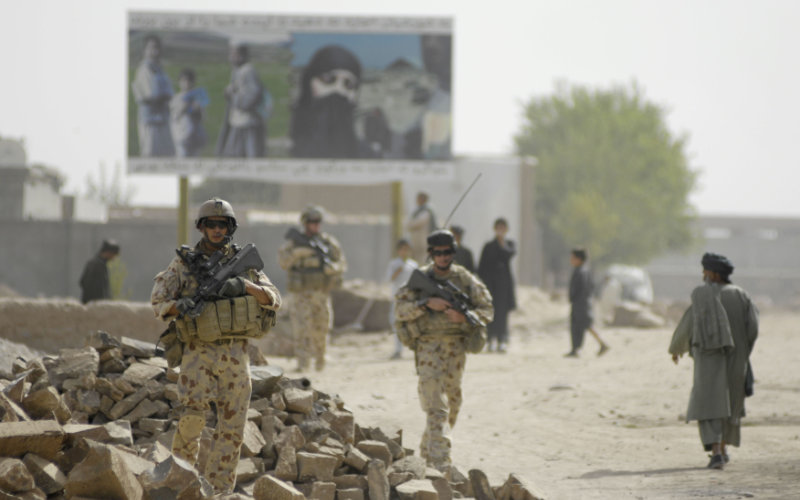Smoke and mirrors: Afghans neglected in Australia's humanitarian program
January 24, 2022
Far from holding out a helping hand to Afghans left stranded by the withdrawal of foreign troops, Australia has been even less generous than normal.
Sometime around New Years Day, Immigration Minister Alex Hawke released his Departments report on the 2020-21 Humanitarian Program he would have received this report around five months earlier.
But why the delay? Why release it around New Years Day and with no associated press release?
That made it certain no one in the mainstream media would notice.
The answer lies in the fact the 2020-21 Humanitarian Program was by far the smallest since records of a separate Humanitarian Program began in 1977-78.
Since that time there has been no year in which we have had a Humanitarian Program of fewer than 9000 visas granted.
The overall Humanitarian Program in 2020-21 was 5947 visas granted of which 4558 were to people who were offshore (see chart).
The 4558 visas granted in the offshore Humanitarian Program was against the background of a ministerially approved 11,750 places by far the biggest ever shortfall against planning levels.
While we know the offshore Humanitarian Program had been deprioritised with the onset of Covid-19, the department itself tries to explain the shortfall as follows:
After the Ministers interim approval on the specific composition of the program on 5 December 2020, the Department formally commenced processing of visa grants for the 202021 program.
In other words, almost half the year was over before the department could start offshore humanitarian visa processing.
It should thus be of no surprise that only 4558 visas were granted and that the minister would want to hide the outcome from the Australian public.
At Senate Estimates in October 2021, the Department of Home Affairs explained the delay in releasing the Humanitarian Program report as due to the need to undertake quality assurance checking.
That sounded like a contrived response at the time. Releasing the report around New Years Day confirms the contrived nature of that response.
Allocation of places to Afghan citizens
Under pressure to increase the Commonwealths commitment to assist Afghan refugees, Hawke announced on January 21 that he had allocated 15,000 places to Afghan citizens over the next four years.
This comprises 10,000 places in the Humanitarian Program (around 2500 a year) and 5000 places in the Family Stream (around 1250 a year).
This follows the governments earlier announcement that it would allocate 3,000 places to Afghan citizens in the 2021-22 Humanitarian Program.
If 3000 places are delivered in 2021-22, that would mean the government would deliver little more than 2350 Humanitarian Program places a year to Afghan citizens in the subsequent three years.
In 2016-17, just under 2000 Humanitarian Program places were delivered to Afghan citizens.
Hardly a fitting response given Australias involvement in the Afghanistan War and the extent to which Australias army and other government officials relied on Afghan citizens for support during the war.
The 5000 places in the family stream for Afghan citizens is against the background of a backlog of around 9000 partner applications that have sat unprocessed for many years an action that is likely to be found to be unlawful if the Australian National Audit Office proceeds with an audit of partner visa processing.
The fact Hawke is committing 5000 family stream places to Afghan citizens is little more than doing what the law already requires.
Hawkes Afghan announcement is yet another instance of playing smoke and mirrors.


